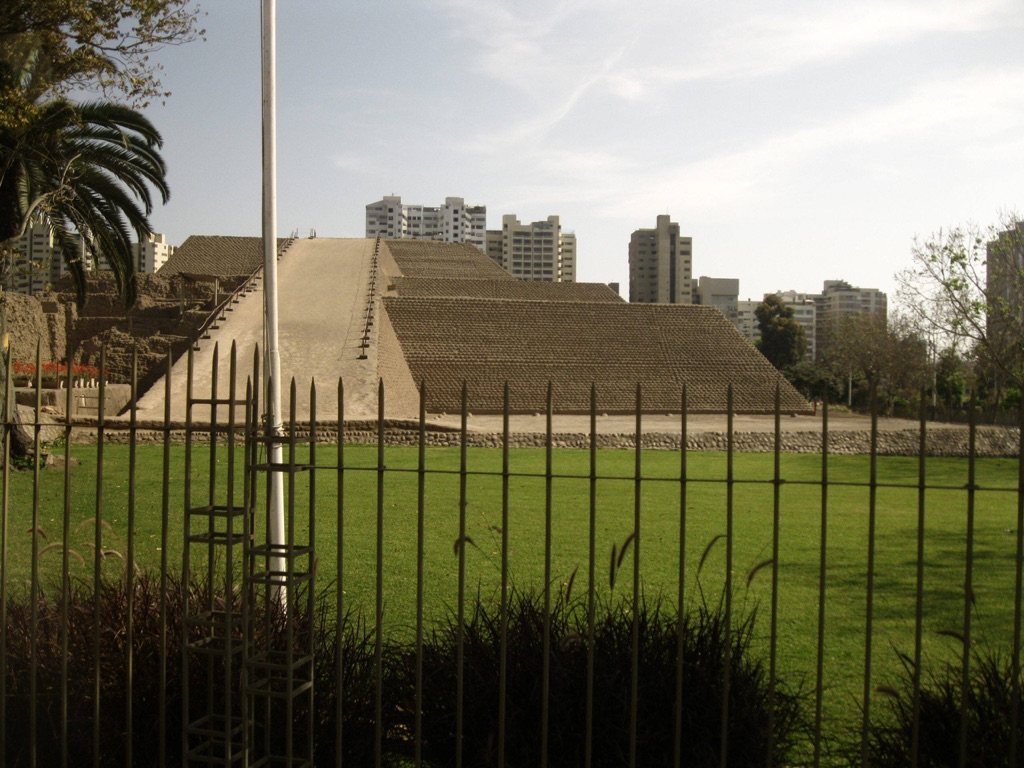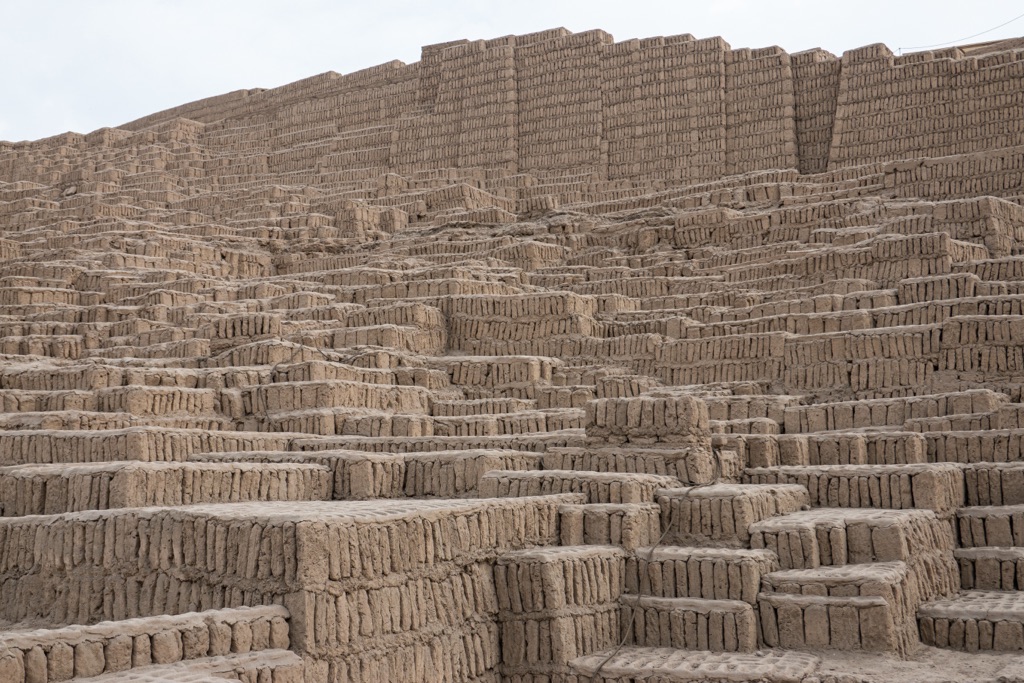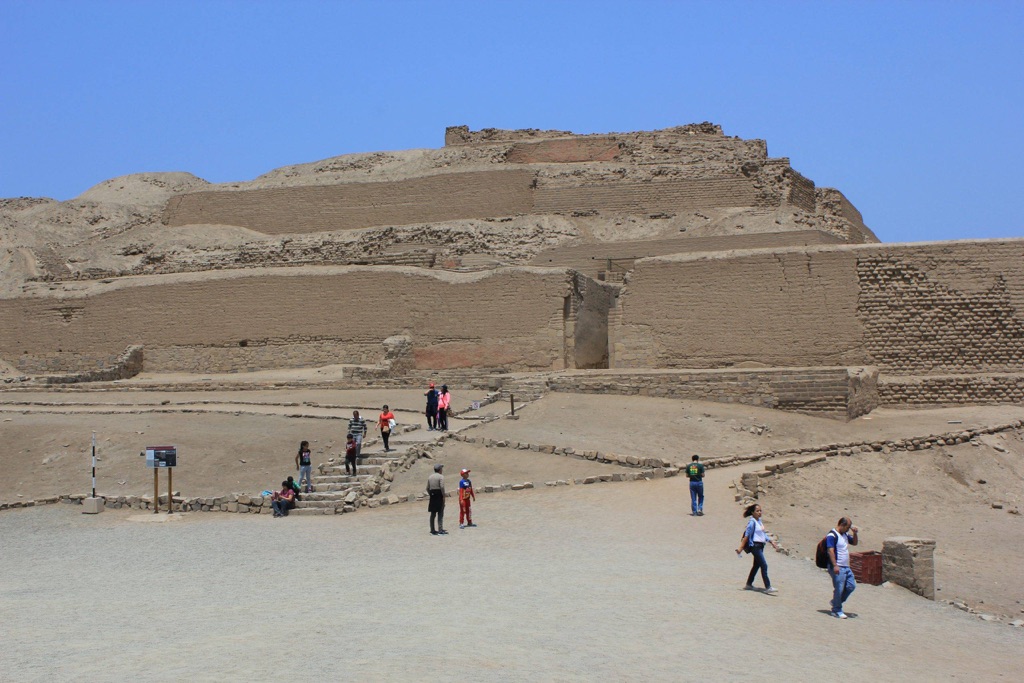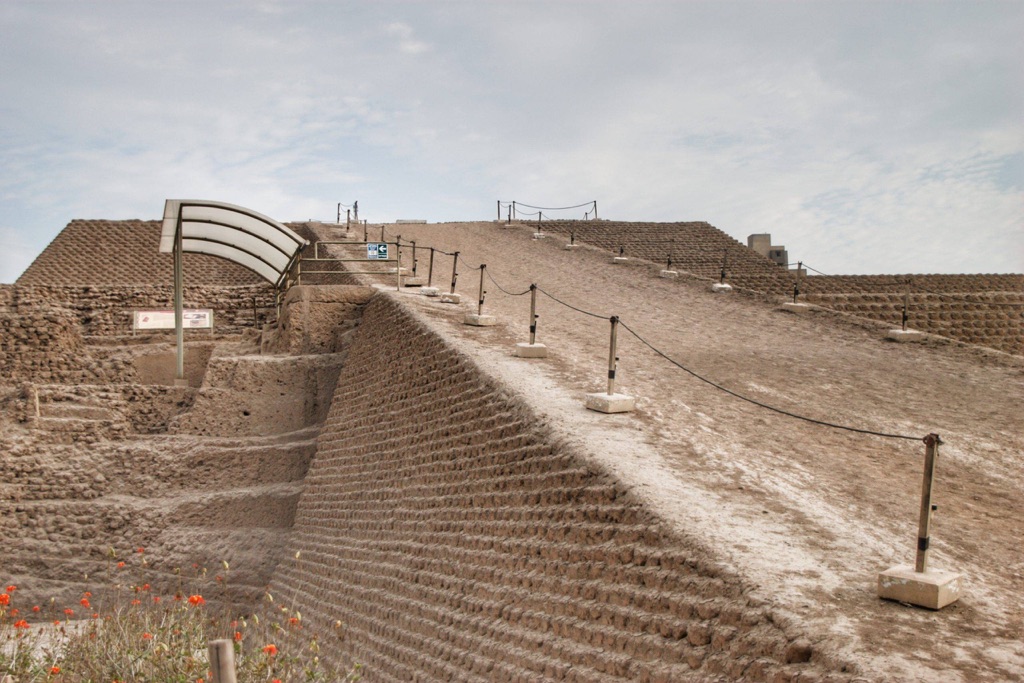Located in the bustling city of Lima, Peru, Huaca Huallamarca is a pre-Incan pyramid that stands as a testament to the rich history of the region. This archaeological site, also known as Pan de Azúcar (Sugar Loaf), is a fascinating blend of ancient history and modern urbanization, offering a unique glimpse into the past.
Lima Culture

The Lima Culture was an ancient civilization that flourished on the central coast of Peru, particularly in the valleys of the Chillon, Rimac, and Lurin rivers from around 100 CE to 650 CE. Characterized by their skillful adobe architecture and irrigation techniques, the people of the Lima culture built extensive networks of canals to support their agriculture, which was vital for sustaining the population in a dry coastal environment. Known sites include Maranga and Pachacamac, where temples and administrative centers indicate a well-organized urban development.
Their artefacts, notably textiles and ceramics, exhibit distinctive styles with patterns and themes unique to the Lima culture, sometimes known as “cultura lima.” Looming pyramids and huacas – ancient religious sites – are testaments to the intricate religious practices and beliefs that played a central role in their society. The end of the Lima culture is attributed to a combination of environmental changes and the rise of the more militaristic Wari culture from the highlands. Today, archaeological remnants of the Lima culture in Peru provide vital evidence of pre-Incan civilization on the Pacific coast and offer insight into the lifestyles and achievements of the coastal peoples of ancient Peru.

Timeline and Geographical Setting
The Lima culture emerged around AD 100, during a period characterized by the development of complex societies along the Peruvian coast. It reached its zenith between the 3rd and 7th centuries AD, with its influence predominantly concentrated in the valleys of the Chancay, Chillón, Rímac, and Lurín rivers. The strategic location of these valleys facilitated not only agriculture but also trade and communication.
Archaeological Sites and Artifacts from the Lima Culture
Society and Culture
The Lima society was marked by its architectural achievements, including the construction of monumental temples and pyramids made from adobe. Notable among these is the Maranga Complex, a ceremonial center within the modern city of Lima. The society was stratified, with an elite class overseeing religious ceremonies, trade, and the administration of agricultural lands. The Lima people were skilled in irrigation, developing extensive canal systems to support their agriculture, which included the cultivation of maize, beans, and cotton. Their pottery, characterized by distinctive black-on-white designs, provides valuable insights into their daily life, social practices, and religious beliefs.

Religion and Gods
Religion played a central role in the Lima culture, with a pantheon of gods reflecting the society’s deep connection to the natural world. The principal deity was believed to be a creator god, often associated with the sea, which was crucial for the Lima people’s subsistence and worldview. Religious practices included offerings, sacrifices, and elaborate ceremonies, many of which were conducted in the monumental temples that dotted the landscape.
Wars and Conquests
There is limited evidence of large-scale warfare or conquests by the Lima culture. The society’s development and expansion seem to have been achieved more through trade and cultural exchange than through military conquest. However, the Lima people did engage in defensive strategies to protect their territories, as evidenced by the construction of walls and fortifications around their settlements.
Collapse and Downfall
The decline of the Lima culture around AD 650 is not attributed to a single cause but rather a combination of factors. Environmental changes, including shifts in the El Niño phenomenon, may have disrupted their agricultural systems and economy. Additionally, the expansion of the Wari Empire, a powerful Andean civilization, into the Lima territory likely played a significant role in the culture’s eventual absorption into broader Andean civilizations.

